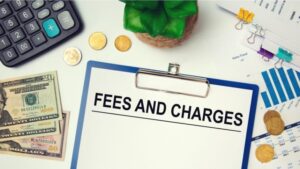Personal Loan Glossary: Loan Terminologies You Should Know
Whether you’re making a small or big purchase, personal loans are a great way to finance your expenses. Some loan terms may be tricky, and a handy personal loan glossary can make it easier.
To help you better understand the world of personal loans, here are common examples of loan terminologies to help you better explore and understand your options.
Adverse Action Notice
In finance, an adverse action is a type of notice that a lender gives to a borrower when the loan application is denied. Typically, poor credit history causes adverse actions. While it’s commonly notified in writing, a lender can also verbally communicate an adverse action.
Amortization
Amortization is the gradual payment of a debt in regular installments. Each payment covers the principal amount and the interest. In loan amortization, the bulk of the payments goes toward the interest. Then, the amount for the principal starts out small and eventually increases until the loan is fully paid off.
Amortization Schedule
Amortization schedules show the breakdown of the principal and interest payments over the life of your loan. This way, you know how much you should pay and the overall cost of your loan.
Annual Percentage Rate (APR)
APR is the percentage rate that shows the true yearly cost of your loan. This includes the interest rate and other fees associated with the loan. So, the higher the APR, the higher the overall loan is.
Let’s say the loan has a 7% interest rate, and you have to pay application and origination fees. The APR would be higher than 7% because it would include other charges.
Application Fee
Some lenders may require you to pay a fee when you apply for a loan — this is called the application fee. Usually, you pay this fee during your application, but it doesn’t guarantee approval.
Application fees are commonly nonrefundable even if your loan gets denied. So, you might consider lenders that don’t charge this fee.
Automatic Payment
To simplify loan payments, many banks and lenders offer automatic payments. The autopay feature automatically deducts your payments from your bank account on every due date. This way, you won’t have to worry about missing payments.
Borrowing power
This indicates how much you can borrow for your personal loan. Different factors affect your borrowing power, including income, expenses, credit score, etc.
Charge-off
If you’ve fallen behind your payments for several months, chances are your lender has charged off your loan. This means the lender has given up on collecting the money you owe and considers it a loss for the company.
Remember that you’re still required to pay back the entire debt. A charge-off will remain on your credit history for a couple of years. This, in turn, will negatively influence your credit score even if you’ve paid it in full.
Collateral
In a secured personal loan, collaterals refer to any asset that you offer to secure the loan. The bank or lender may seize the collateral in case you fail to pay off the loan. If you secure the loan with your savings account or CD, the lender can collect the collateral if you default.
Co-borrower
A co-borrower is a person who agrees to be responsible for repaying the loan with you. Usually, you may add a co-borrower if your finance isn’t enough to get approved. Therefore, it’s ideal to have a co-borrow who’s in a stronger financial position.
Let’s say you apply for a personal loan with your partner to purchase a car. Since you’re both responsible for paying the loan, it’s common to have joint ownership of the car.
Cosigner
Normally, you need a cosigner if you have a low credit score or no credit history at all. The cosigner is responsible for repaying the loan if the primary borrower can’t. Often, cosigners are family members or close friends. But unlike a co-borrower, a cosigner doesn’t own any portion of the loan.
Credit Agency
Credit reporting agencies or credit bureaus collect, calculate, and report credit scores to creditors and lenders. Each credit bureau uses a different formula to calculate your credit score. In the U.S., the three major credit agencies are Equifax, Experian, and TransUnion.
Credit History
Your credit history shows how you manage and pay off your debts, such as credit cards and other loans. It’s indicated on your credit report and is a primary factor that affects your credit score.
In case you’ve missed multiple payments in the past, this can hurt your credit history. But you can build a positive credit history if you manage your finance responsibly.
Credit Report
As mentioned, a credit report records your credit history, including past and current debts, payment history, and more. It’s important to check your credit report, so you can find and correct any errors.
You can get a free copy of your credit report each year from Equifax, Experian, and TransUnion. Because of the pandemic, you may request a free credit report each week until December 2023.
Credit Score
The credit score sums up your credit behavior and rates your creditworthiness with a three-digit number. Credit scores can range from 300 to 850. Since there are three major credit bureaus in America, you can have multiple credit scores.
Banks and lenders look at your credit score to gauge your ability to pay loans on time. Generally, a high credit score means you have good credit, so lenders see you as low risk. On the other hand, a score of below 580 means you have poor credit.
Creditworthiness
When you apply for a loan, lenders measure your creditworthiness to evaluate your ability to pay it back. Your credit score and other financial credentials influence your creditworthiness.
If you’re a responsible borrower, lenders are likely to approve your loan and offer favorable terms. However, they can deny your application or offer higher rates and fees if you are considered a risky borrower.
Daily Simple Interest
A daily simple interest accrues interest every day and that interest is calculated on the current unpaid principal balance. Your payments are split into interest and principal. Because of this, your principal balance decreases with the interest charges as you make your monthly payment.
Debt Consolidation
Debt consolidation involves taking out a new loan to pay off other smaller debts, such as credit cards. Instead of managing multiple debts, combining them into one loan simplifies your finance. Aside from ease of management, debt consolidation can lower your overall interest and help you secure more favorable terms.
Debt-To-Income Ratio (DTI)
Your DTI is expressed in percentage and shows how much of your gross monthly income goes to your debt payments. Lenders use your DTI ratio to assess your capability to manage your monthly debts. Through this ratio, they can estimate how much money you can borrow.
Default
When you miss payments for a few months, you can be considered in default. The timeframe depends on your lender, terms, and type of loan. When this happens, the lender might take action to reclaim the loan.
Deferment
Deferring on your personal loan allows you to pause or lower your payments for the period approved by your lender. Of course, you need to meet certain requirements for a loan deferment.
Typically, this option is available to borrowers facing financial hardships. Since criteria vary per institution, it’s best to contact your lender to check if you qualify.
Delinquency
Your loan is considered delinquent when your payments are just a few days behind the due date. Depending on your lender, you may need to pay a late fee after the set grace period.
Fixed Interest Rates
Fixed interest rates remain the same during the loan term. Let’s say your personal loan has a fixed rate of 8.49%. Regardless of market conditions, the loan’s interest rate stays the same until the end of your term.
Grace Period
When your payments are late, the grace period is the time during which you don’t have to pay penalties and don’t accrue interest. Usually, grace periods last from 15 to 30 days, but each lender has a different grace period.
Gross Income
When you apply for a loan, one of the things lenders look at is your income. Your gross income refers to the money you earn before taxes and other deductions.
Guarantor
Like a co-borrower or cosigner, a guarantor is a friend or family member who can help with your loan application. Essentially, having a guarantor is beneficial if you have a low income or poor credit history. While the guarantor pledges to pay your debt if you default, they don’t have ownership of the loan.
Hard Credit Check
To determine how much risk you pose, lenders check your credit as part of the loan application process. A hard credit check, hard inquiry, or hard pull is when a lender requests your credit report.
Since a hard inquiry appears on your credit reports, it can temporarily decrease your credit score a bit. Keep in mind that multiple hard credit checks in a short period can hurt your credit score.
Installment Loans
An installment loan allows you to borrow money and pay it back in equal installments. This loan has a preset term, and it usually comes with a fixed interest rate.
Interest Rate
The interest rate represents the cost that banks or lenders charge you for borrowing money. It’s expressed as a percentage, and it doesn’t include the principal amount and other fees associated with your loan.
Late Fee
If you make any payments past the due date, your lender may charge you a late fee. This fee usually costs around $25 to $50. Depending on your lender, you may need to pay a flat fee or a percentage of your loan balance.
Late Payment
A late payment refers to a payment made after the due date. For example, if your due date is every 13th of the month, any loan payment beyond the 13th is considered late. Most importantly, late payments can harm your credit score, so make sure you pay your bills on time.
Lien
When you apply for a secured personal loan, the lender puts a lien on your collateral. A lien is a legal claim that shows your lender has the right to repossess the collateral if you can’t pay back your debts.
Line of Credit
A line of credit can be a great option if you don’t need to borrow all the money at once. While there’s a certain limit, you can tap into your line of credit anytime you want. After, you can repay the amount you took out and borrow it again.
Loan Agreement
A loan agreement is a contract that outlines the loan terms and conditions. It may include the loan amount, interest rate, potential fees, payment schedule, and more. Since it’s legally binding, carefully review a loan agreement before signing anything.
Loan Limit
Your loan limit refers to the maximum amount you can borrow from a bank or lender. It depends on your income, expenses, creditworthiness, and overall financial situation.
Loan Term
When applying for a loan, your term is the number of months or years you have to pay back your debt. If you take out a 24-month loan, your repayment period would be two years. Most personal loans can range from 12 to 60 months, but they can vary per bank or lender.
Non-Recourse Loans
A non-recourse loan is a secured loan that requires you to put up your asset as collateral. Lenders can seize the collateral attached to your loan if you default. However, they can’t take any additional assets even if the collateral is insufficient in value.
Origination Fee
Some lenders may charge you a loan origination fee that covers the cost of processing the loan. It differs per lender, but an origination fee is calculated as a percentage of the principal amount.
For example, if you apply for a $10,000 loan with a 3% origination fee, the fee would be $300. This means the lender would deposit $9,700 to your account.
Payday Loans
Generally, you can get a payday loan to borrow smaller amounts to cover your expenses until your next paycheck. While you don’t need collateral, payday loans are very expensive. It’s commonly known as predatory lending since they come with extremely high interest.
Payment Terms
When you sign a loan agreement, the payment terms define the terms and conditions you agree to. This involves your loan term, fees and penalties, monthly payments, and other details about the loan.
Precomputed interest
In a pre-computed interest loan, lenders calculate your overall interest at the beginning of taking out your loan. This estimates how much interest you will need to pay over the life of the loan.
Prepayment Fees
Sometimes, lenders charge prepayment fees or exit fees when you pay off your loan before the final payment due date. Paying it off earlier means saving on the interest paid, so prepayment penalties cover the loss that your lender may incur.
Prequalification
Getting prequalified for a personal loan is a fast way to let lenders check your eligibility and estimate how much you can borrow. Prequalification doesn’t formally guarantee your application, and it doesn’t affect your credit score.
Principal
The principal refers to the original amount of your loan. This means that it doesn’t yet include the interest and other fees. For instance, if you take out a $5,000 loan, your principal amount is $5,000.
Recourse Loans
Similar to non-recourse, a recourse loan requires collateral. If you fail to pay your loan, lenders can seize and sell the asset you pledge. In case the asset attached to the loan is insufficient, they can go after your other assets to repay the debt.
Refinancing
Refinancing a personal loan replaces your existing loan with a new one. Essentially, you want to refinance to a more competitive rate or favorable terms to save on interest. It can be a great idea to refinance if you want to change your loan term or if your financial situation changes.
Revolving Credit
Revolving credit, like credit cards, lets you borrow up to a certain credit limit as you need. With this loan, you have ongoing access as long as you have available credit. You can either pay your balance in full or meet the minimum payments.
Secured Loan
When you choose a secured personal loan, you are required to set an asset as collateral. This means the lender can reclaim the asset as payment in case you fail to pay your loan. Since you pledge collateral, secured loans tend to offer better rates and terms.
Signature loan
A signature loan is a popular type of unsecured loan. Instead of pledging an asset, you offer your signature as a form of legal collateral. Signature loans tend to have higher interest rates than secured loans since they carry more risk to lenders.
Soft Credit Check
A soft inquiry or soft pull happens when lenders check your credit report for prequalification. Unlike a hard inquiry, a soft credit check doesn’t impact your credit score.
Unsecured Loan
Most personal loans are unsecured. This means lenders can’t seize your asset if you default on your payments. Since unsecured loans come with higher risks, lenders evaluate your application and rate based on your creditworthiness.
Variable Interest Rates
Also known as floating or adjustable rates, a variable interest rate rises and falls based on market conditions. In other words, your payments are lower when the rate decreases, but you pay more when it increases.
Carla is a skilled copywriter at BestFind with a background in marketing and communications. She specializes in reviewing personal loan and finance products to help readers navigate the complex world of personal finance.
Latest posts

What is debt consolidation, and does it hurt your credit?
04.07.2023

What is an auto loan origination fee?
05.07.2023

What is a personal loan origination fee, and can I avoid it?
04.07.2023
